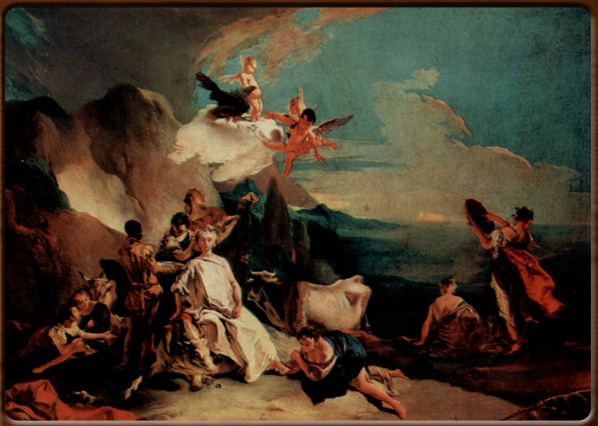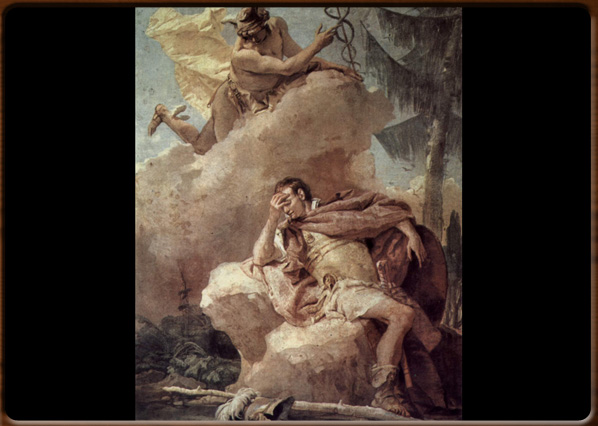
The rape of Europe, Giambattista Tiepolo, 1720-22, Venezia, Gallerie dell'Accademia.

Mercury and Enea, fresco 1757, Villa Valmarana, Vicenza


No video
Giambattista Tiepolo (Venice, 1696 – Madrid, 1770) was an eighteenth-century painter and highly-skilled decorator, as well as a designer and carver.
Influenced by his contemporaries, Giovan Battista Piazzetta and Sebastiano Ricci, and the great Venetian tradition in the 1500s, Tiepolo tended to differ from the traditional Baroque style. This can already be seen in his first major works, such as his Glory of St. Teresa (1720-25, Chiesa degli Scalzi, Venice), Madonna del Carmelo (Pinacoteca di Brera, Milan) and Four mythological scenes (1720-22, Gallerie dell’Accademia, Venice).
Tiepolo had a good reputation outside the Venice area: in 1730 he received commissions in Milan and elsewhere in Lombardy, where he worked on entire decorative cycles for some of the most beautiful palaces in Milan and the Capella Colleoni in Bergamo.
He seemed to have an inexhaustible ability to turn out decorations, altarpieces, mythological and historical canvases at the time: the ceiling for Santa Maria dei Gesuati in Venice (1737-39), the paintings for the Scuola Grande dei Carmini (1740-44) and those in Palazzo Labia depicting Histories of Antonio and Cleopatra (1747-50) are just a few examples.
In 1750, Tiepolo went to Würzburg in Bavaria with his sons Giandomenico and Lorenzo (his pupils) to oversee the decoration of the Prince-Bishop’s residence. On his return from Germany, Tiepolo decorated Villa Valmarana near Vicenza and painted the large fresco entitled Glory of the Pisani Family in Villa di Stra near Venice and the decorative cycle in Palazzo Rezzonico in Venice.
Tiepolo spent his last years in Madrid, where he worked on the decoration of the throne room for King Charles III, as well as a series of seven altarpieces for the royal church in Aranjuez (1770), his last work.
1600 - 1700 - - rev. 0.1.7